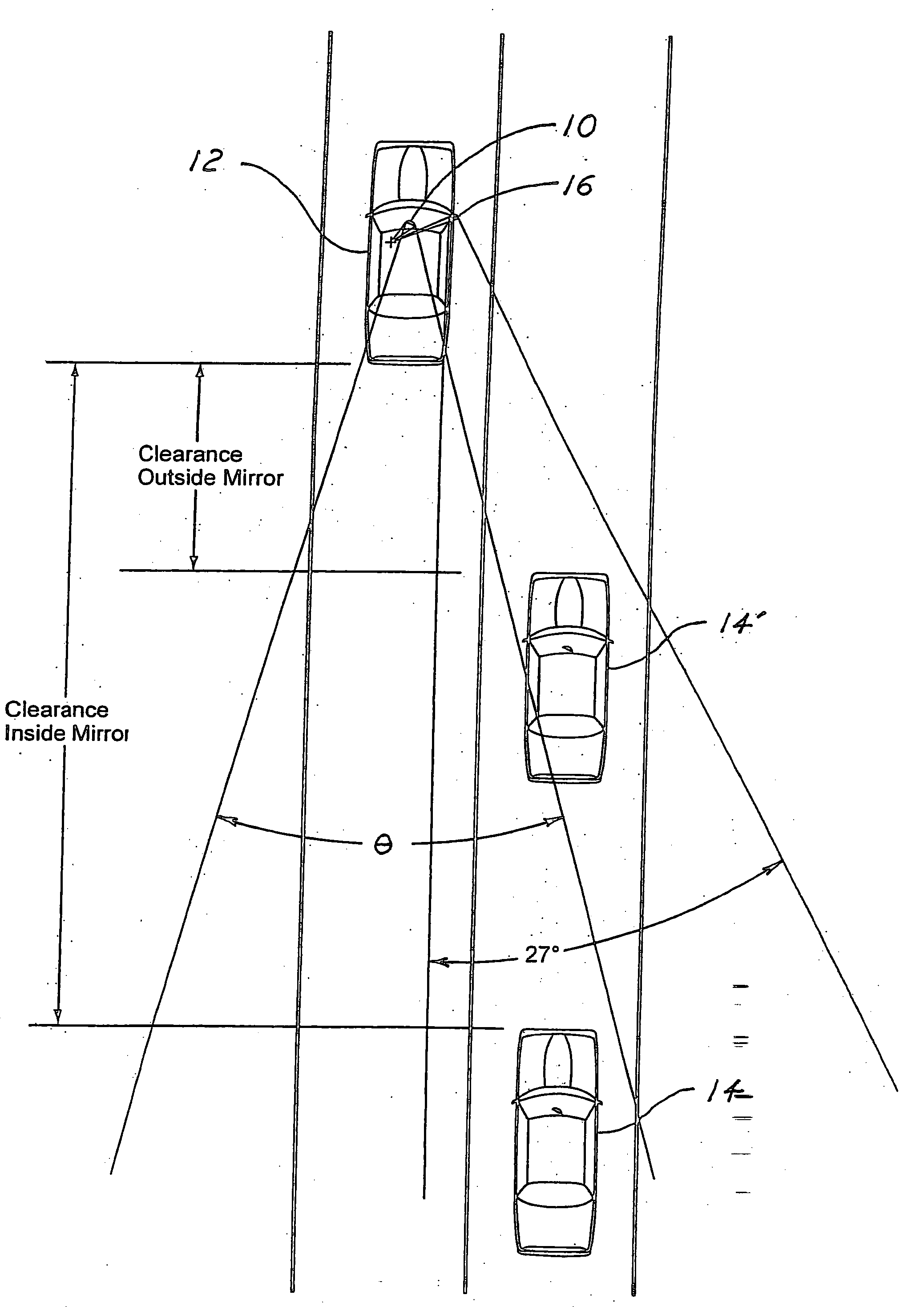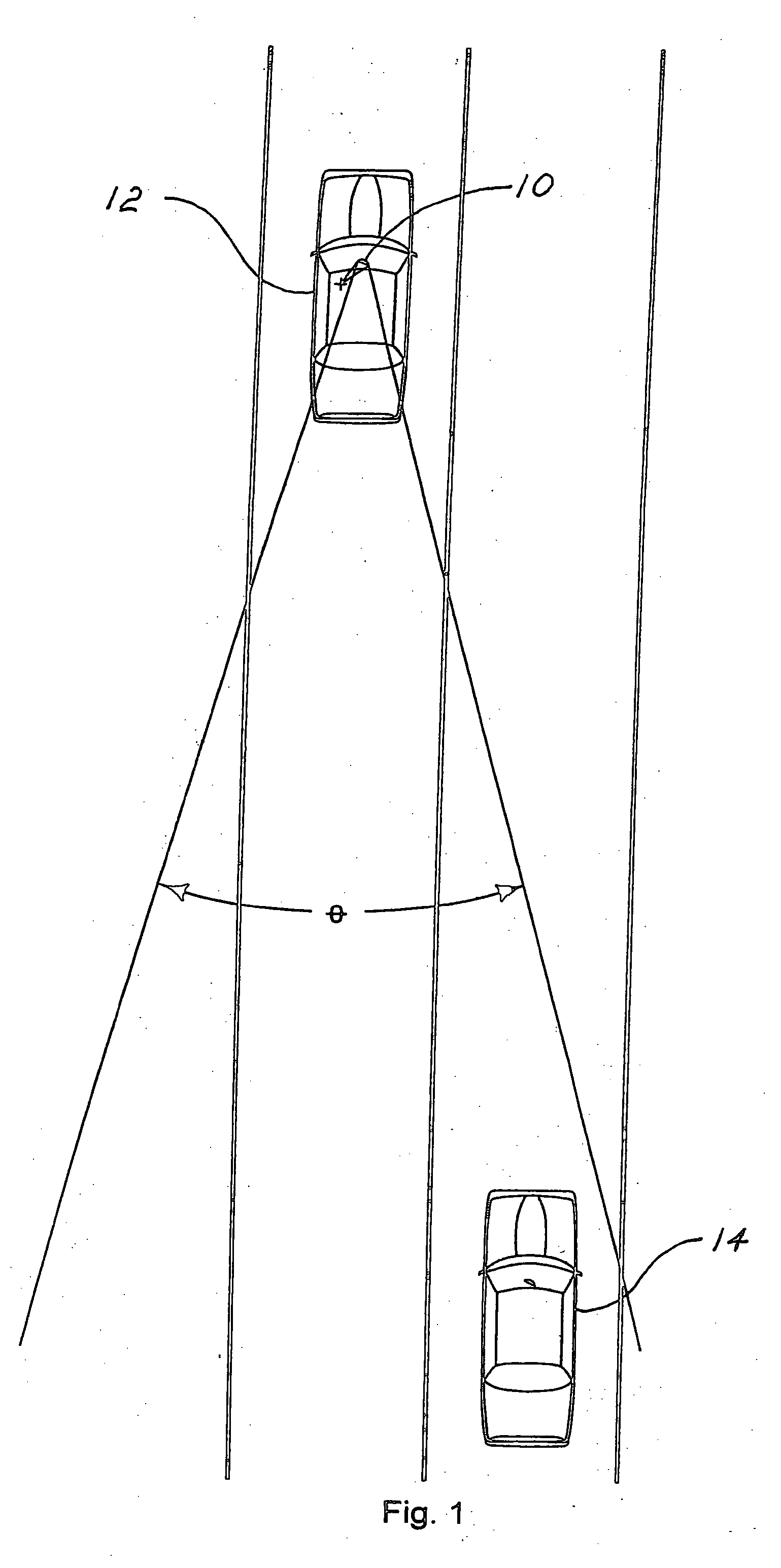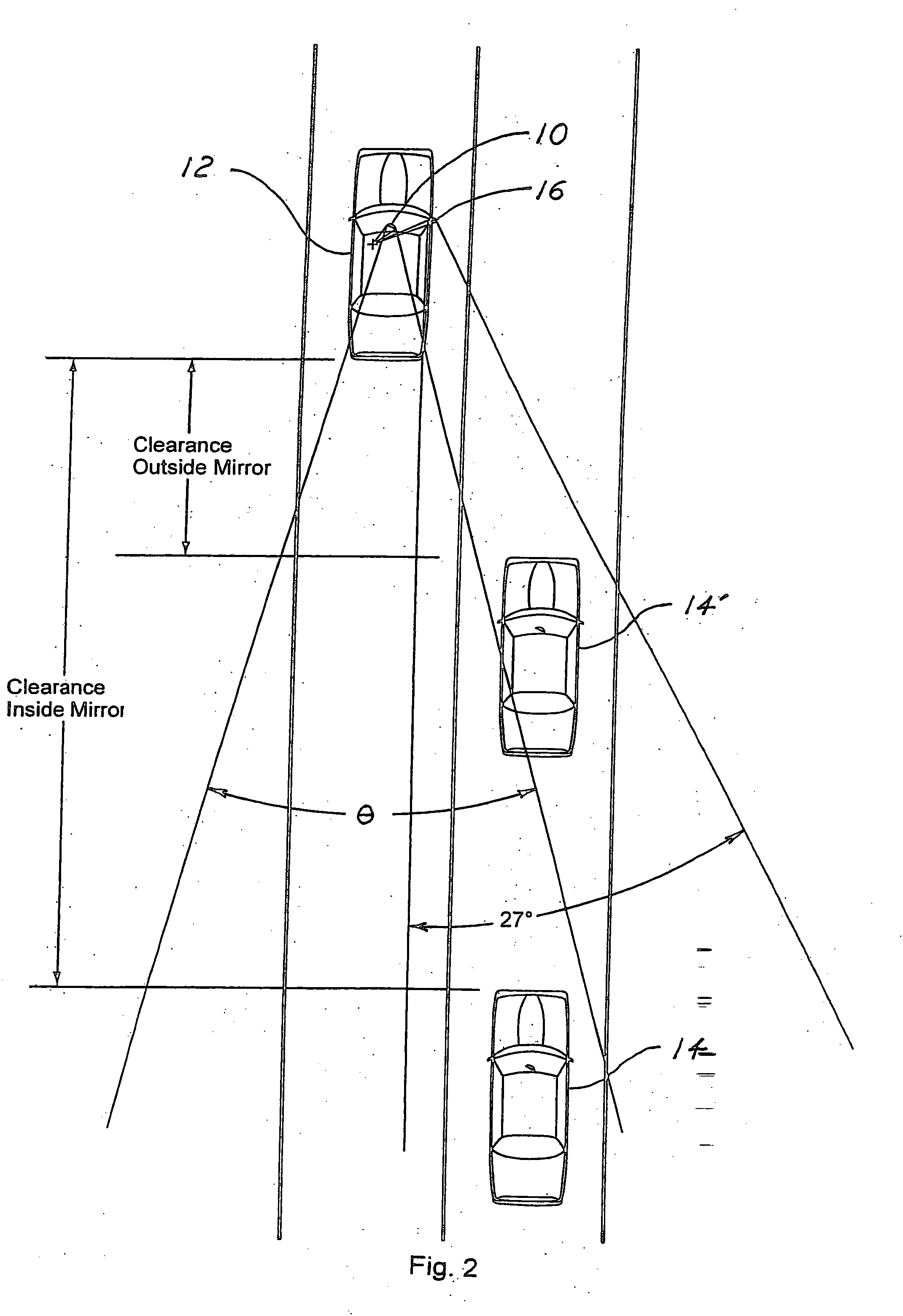Automotive outside rearview mirror system having optically similar left and right side mirrors
a technology of rearview mirror and mirror, which is applied in the field of automotive mirrors, can solve the problems of reducing the viewing angle, narrow and relatively useless field of view, and affecting the judgment of both the distance and speed of the vehicle seen in the mirror, and achieves the effect of reducing the distance and speed of the vehicl
- Summary
- Abstract
- Description
- Claims
- Application Information
AI Technical Summary
Benefits of technology
Problems solved by technology
Method used
Image
Examples
Embodiment Construction
)
[0021]FIG. 1 shows the field of view, θ, of an inside rearview mirror 10 on a leading passenger car 12 and a trailing passenger car 14 whose front end is entirely visible in mirror 10. Most passenger cars today have a wide enough rear window and a wide enough inside rearview mirror to provide a total viewing angle of about 30° or 15° right and left. This characteristic of the inside rearview mirror has led to a widely used and very safe procedure for determining when it is safe to change lanes to the adjacent lane after having passed a vehicle in that lane. The National Safety Council (NSC) instructs its students in their Defensive Driving Training Course as follows: [0022]“It is safe to return to your lane only when you see the entire front of the vehicle you are passing in your inside rearview mirror. Before you actually move into the lane, check your right blind spot. Move smoothly into the right lane when it is safe.”
[0023] This is the procedure still taught today. Use of the c...
PUM
 Login to View More
Login to View More Abstract
Description
Claims
Application Information
 Login to View More
Login to View More - R&D
- Intellectual Property
- Life Sciences
- Materials
- Tech Scout
- Unparalleled Data Quality
- Higher Quality Content
- 60% Fewer Hallucinations
Browse by: Latest US Patents, China's latest patents, Technical Efficacy Thesaurus, Application Domain, Technology Topic, Popular Technical Reports.
© 2025 PatSnap. All rights reserved.Legal|Privacy policy|Modern Slavery Act Transparency Statement|Sitemap|About US| Contact US: help@patsnap.com



